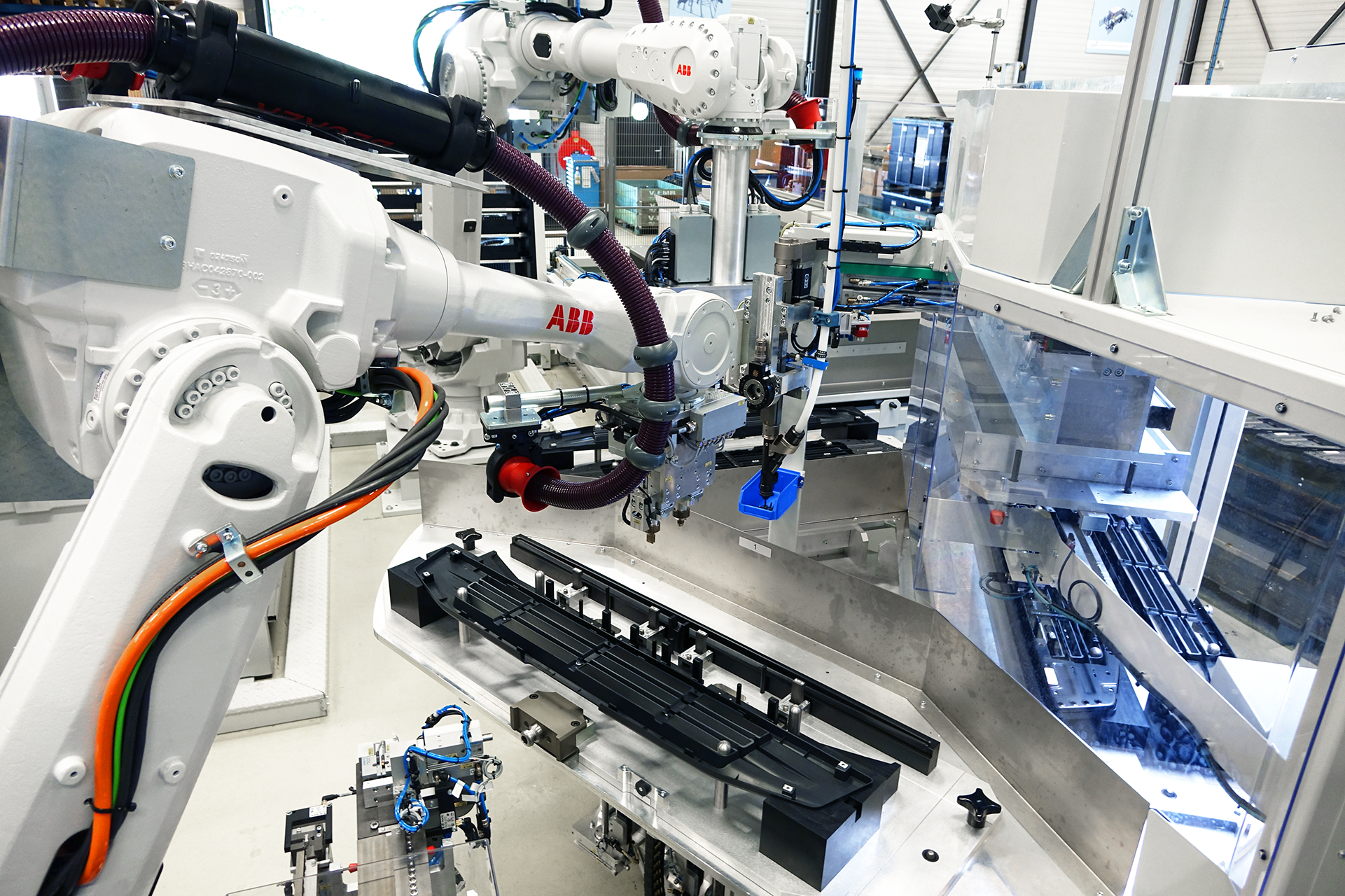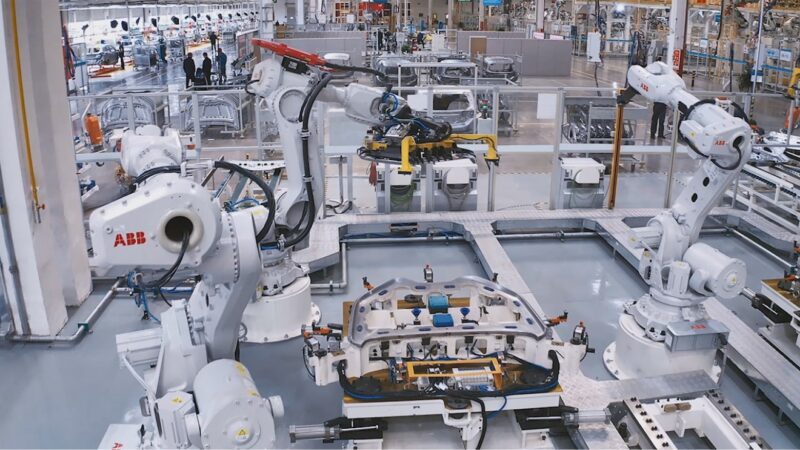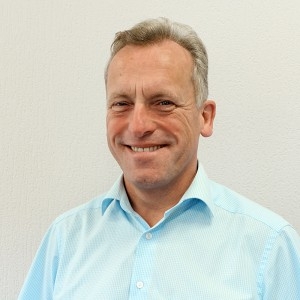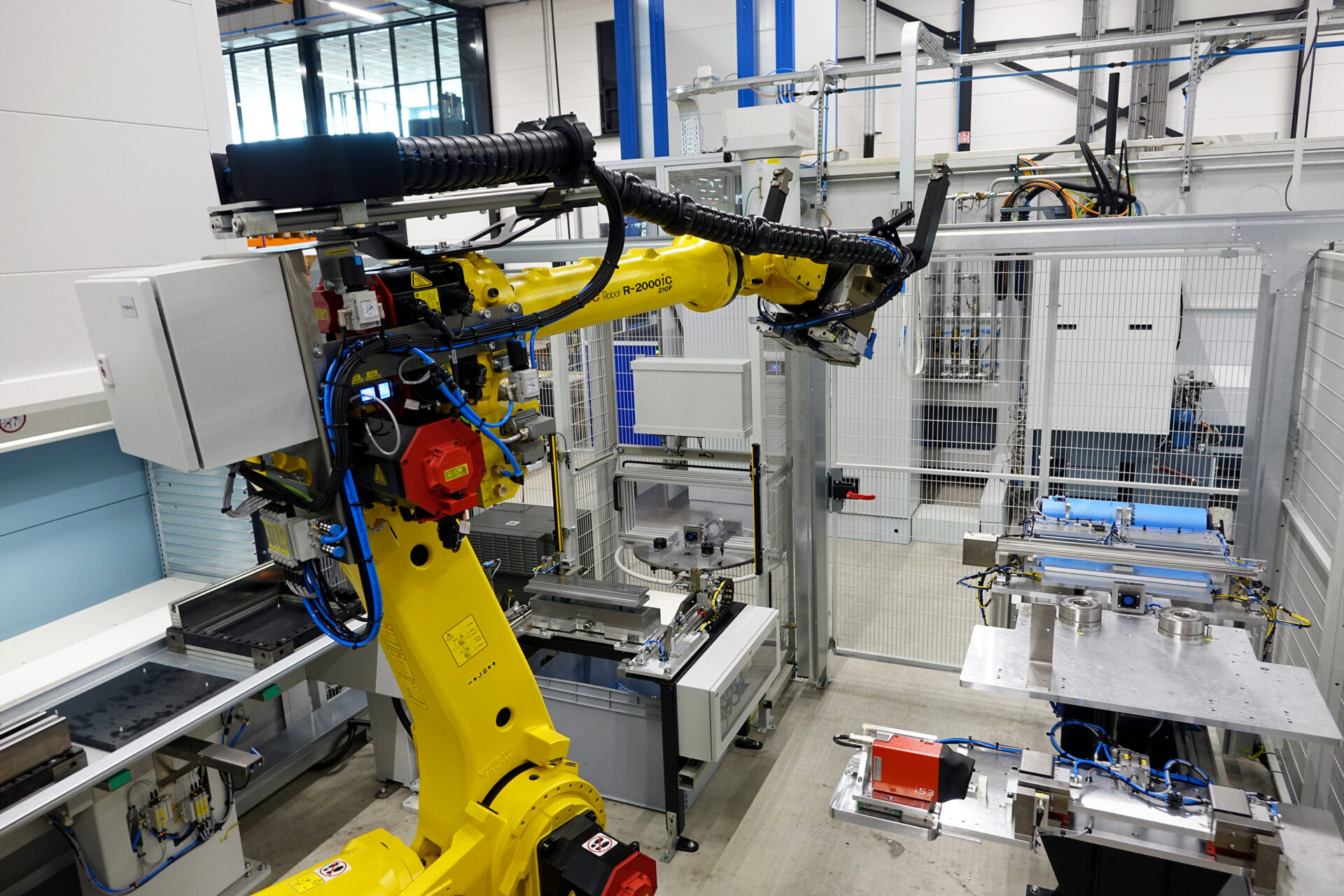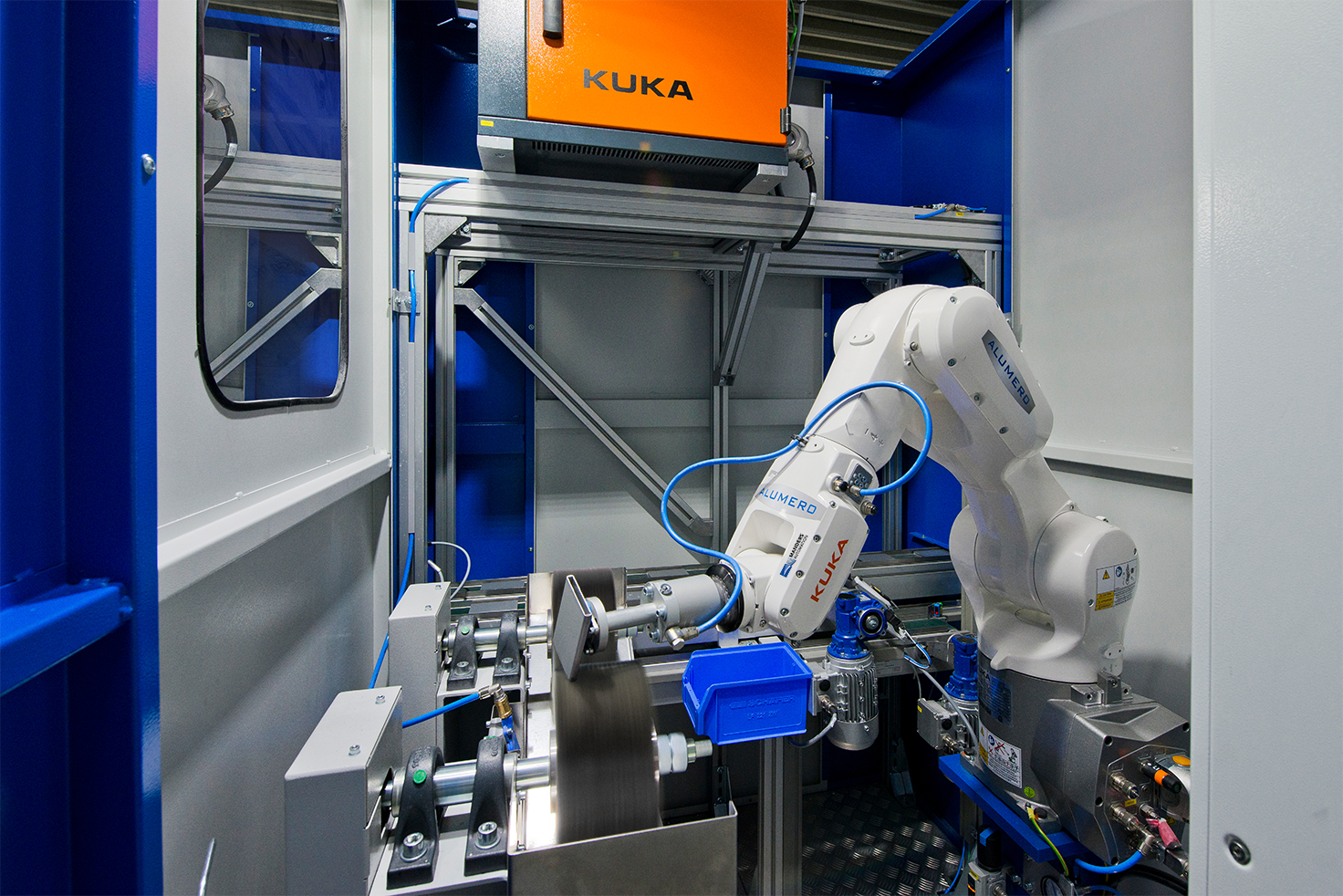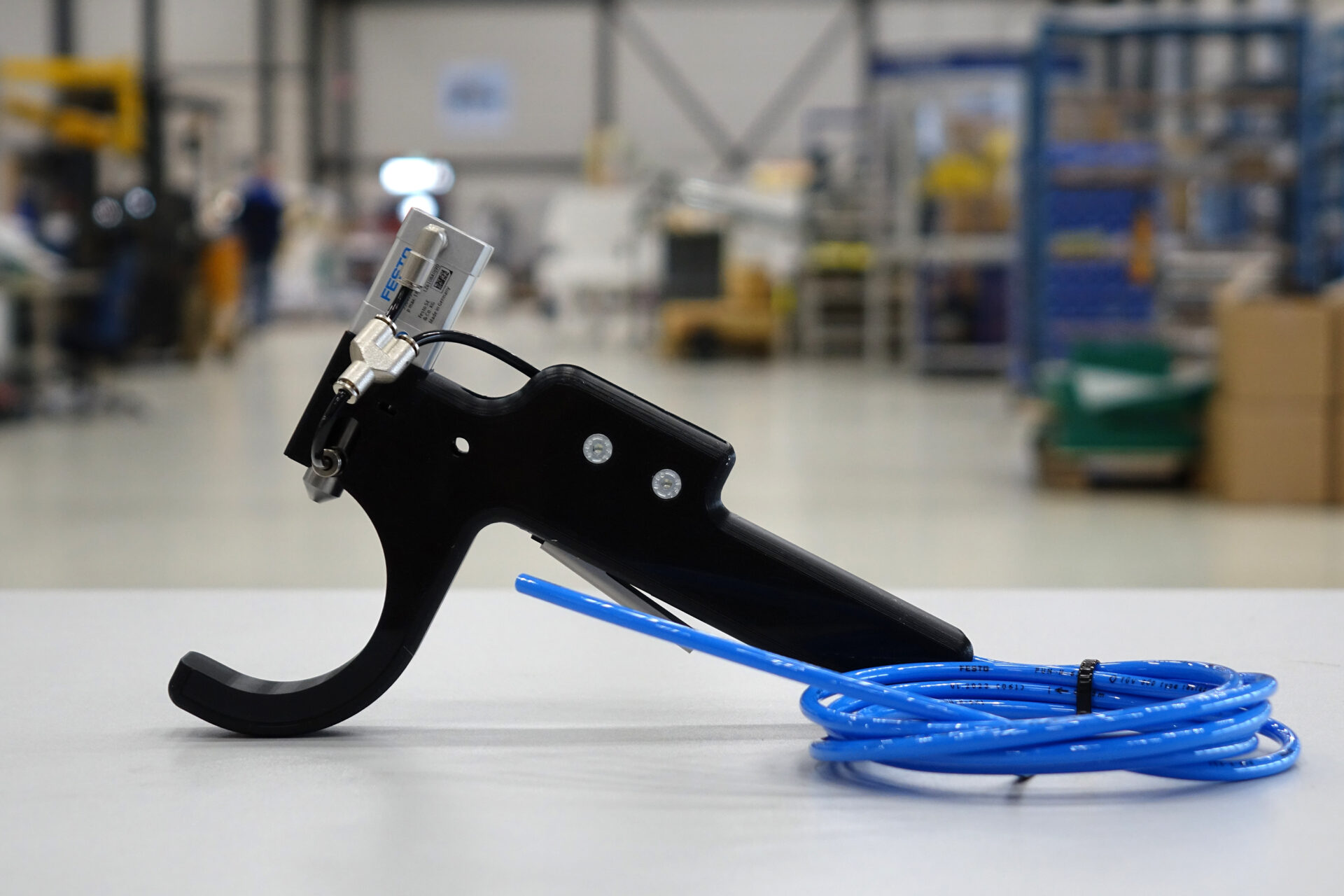For VDL VDS in Hapert, we made a machine that assembles different parts of a step grille. Together with ABB and VDL VDS and Liam van Koert, we created the article below about this, which can also be read in edition three of Robot Magazine 2022. The document can also be downloaded in its original layout at the bottom of this page.
VDL VDS squeezes the most out of an increasingly robot-rich production floor
Innovation is everywhere and even in the grilles of trucks. For example, a customer of VDL VDS in Hapert developed a fold-out version that also functions as a step. This allows drivers to clean their windscreen without a ladder for a safe view of the road. Case of small effort, big fun? Not quite. Despite the fact that thanks to the invention, drivers will now undoubtedly scrub their windows whistling. After all, he no longer has to arrange stairs, but secretly producing the grilles involves a lot. So much so that it took three companies to build the two robotic cells needed to deliver the grilles in large quantities with consistent quality to a famous truck builder.
VDL VDS Technische Industrie is one of the early VDL companies that created a furore in Hapert with high-quality metalworking. The manufacturer of complex metal parts for the automotive, appliance, aircraft, medical and construction industries, among others, has been part of the VDL Groep since 1981. Their machinery includes mechanical and hydraulic presses ranging from 100 to 800 tonnes, but in recent decades they have expanded to include a (spot) welding, laser cutting and assembly department. Mother of all presses is the impressive fully automatic 800-tonne Schuler, which has elevated pressing to a continuous process.
Craftsmanship
Daan Roovers, head of the Process Engineering department at VDL VDS, explains that stamping seemingly simple parts like a grille is anything but simple. Indeed, developing the right stampings, welding cell with welding jig and the final assembly cell required a lot of expertise. From VDL VDS, that lies primarily in getting the most out of their 23 press stations. That this requires specialist, technically challenging expertise becomes more than clear when we look at some of the stampings in the factory. These ‘almost machines’ are an ingeniously synchronised assembly of precision parts.They look complex, even to a technically savvy person who is explained how they work in a nutshell. Roovers explains that running the ‘what’, ‘when’ and ‘on what press’ is also part of the process. The better logistical planning so to speak, where not every stamp is suitable for every machine and at the same time you want to have as many machines working as possible.
Welding
Besides the presses, there are also several welding stations on display at VDL VDS’ factory. These include 16 spot welding machines, two 3D laser cutting/laser welding machines, various custom-made automations and 13 welding cells. The latter category also includes the
ABB grille welding cell that was recently added to the production line.
VDL VDS chose to place the design of this robot welding cell with ABB because of its complexity and its experience with Automotive/Tier 1 projects. ABB supplies complete robotic welding cells from its factory in the Czech Republic and in specific cases, despite being a solution less frequently used in the Benelux. Indeed, in the Benelux, it mainly works with system integrators.
Daan: ‘We are increasingly using ABB robots. Although not completely exclusive, we do try to set a standard for robotisation. Apart from the pleasant cooperation with the ABB team and good products, the advantage is that we have one point of contact for servicing the robots, for instance, and that scheduling maintenance becomes easier. On the other hand, it is of course nice for the operators and technical service to have a familiar operating interface for the production cells. In the case of the welding cell, it was nice to be able to order a complete FlexArc K cell with two IRB 1600s and everything else, including workpiece positioning, welding torch, safety systems, extraction and so on. The highly sophisticated welding jigs, triple for three variants of products, are actually the only customer-specific part, but ABB made and installed those too based on designs made with our input.’
Assembly cell with two robots
Rob Haerkens, as Sales Engineer at Manders Automation, was closely involved in the development of the assembly cell for mounting the front grilles of the step-up grille.
Rob Haerkens: ‘In this cell, the metal and plastic part of the grille are joined. Once welded and after undergoing various post-treatments, the metal parts of the grilles are transported to the assembly cell in special crates. Here, they are placed on the turntable by the input/output robot (an IRB 6700). Because of the way the plastic parts are delivered and the variety of types of parts, it was decided to have operators insert them manually. They also put the fastening clips on the part, which then rotates to the assembly robot. This robot – an IRB 4600 – attaches the various fastening items. Finally, the now complete grille is rotated further to the first robot (IRB 6700), which picks up the product and, after placing protective sheets against paint damage, neatly executes it.’
Why VDL VDS chose Manders Automation to design and build this cell?
Rob Haerkens: ‘At Manders Automation, we specialise in various assembly and connection techniques. It is a branch of sport that requires process knowledge in addition to automation knowledge. As the previous cell for VDL VDS had been running satisfactorily for a number of years, this order also came to us. We know both ABB and VDL VDS well and the lines of communication are short, so expertises can be well coordinated. For which challenges did our expertise come into its own? In this project, it was mainly in dealing with the shape stability of the plastic and for achieving the desired cycle times. That means optimising robot paths and processes by doing things in parallel or in a different order, for example. Of course, safety is also always a priority. A SafeMove solution via PROFIsafe was ultimately chosen for this cell.’
Strategic robotisation
Control of the assembly cell is handled by a central PLC that also controls the robot controllers and provides data towards the top of an OEE (Overall Equipment Effectiveness) system. This system is then linked to an ERP system developed by VDL itself. Daan Roovers explains that from this overall system, insight is given into the OEE of the cell, which keeps climbing.
Daan Roovers: ‘We are currently busy getting the output of robots and operators optimal. Under the watchful eye of a process engineer, we will run mainly small batches for six months. This way, we can still streamline any malfunctions in this phase of delivery. Then comes the ramp-up and after that we start running at full speed. From then on, we can achieve the required quantities and quality with two shifts and the cell is released for production. If you then consider that we started this project at the end of 2018, you may conclude that there is quite a lot involved in producing a new composite product like a grille. However, this does not deter, but rather tastes like more. As VDL VDS, we want to diversify so that we are not only dependent on punching, but can also process plastics, for example. In that respect too, this grille is a very nice stepping stone.’
Looking for a customised solution?
Are you looking for a customised solution to set up your production line efficiently and reduce costs, without having to compromise on the quality of your product? Contact us to discuss the possibilities.
